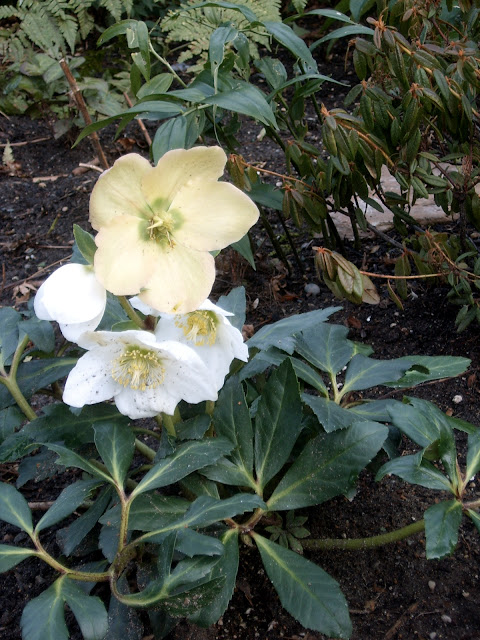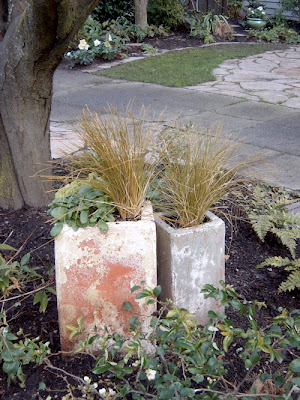When I began gardening my interest was flowers and colored foliage. Then, about a year after I started my garden, I went on a guided walk through Seattle's Washington Park Arboretum. The man leading the tour (unfortunately I have forgotten his name) met us at the Graham Visitors Center and began with a short talk, in which he confessed he sometimes spontaneously would hug a tree. I discreetly rolled my eyes. It was January and outside was cold and the sky was gray-white and by the end of the walk I had fallen in love. I had become someone who might not hug a tree but certainly could understand the desire to do so.
The tree above is my favorite red barked maple: ACER pensylvanicum 'erythrocladium,' (the common name is erythrocladium moosewood). Cold weather turns the bark coral, and vertical white stripes (this is one of a group of striped bark maples) intensify the color. Often, in winter's pale light, the coral becomes shades of orange and pink so that one looks longer at the tree, charmed by the shifting colors.
This maple is expensive and hard to find. When I use one in a garden I plant it to be seen every day of the year. It will be eight to ten feet in ten years, and needs good sunlight. The one above, planted on the east side of a house, gets light until mid-afternoon. I accent the tree's color with both orange and pink; above you can see orange-centered daffodils blooming near-by, and pink-flowered hellebore would be a nice surround to add to the winter interest.
Because of its exfoliating orange, green and gray bark some believe STEWARTIA pseudocamellia is the loveliest deciduous tree. Above you can see thick pieces of peel and the colorful patches left behind. This is a tree to plant near the front door of a house where you plan to live awhile; the peeling gets going by year five and gets better as the tree matures. Orange flowers and foliage--perhaps an orange-leafed coralbell or orange daffodils or the sedge CAREX testacea with brilliant orange highlights--would nicely play up the tree's orange.
My favorite exfoliating tree is the birch, partly because it starts peeling as it starts growing. BETULA nigra 'heritage,' or the heritage river birch, has cinnamon, salmon and light brown bark that peels off in curly or wavy sheets to reveal creamy white bark. Similar is BETULA jacquemontii, or the white-barked himalayan birch, with pure white peeling bark.
Birches grow fast, they grow in clay soil, they grow close together--a grove of birches is lovely--and they can be grown next to a walkway: river birch, including the one pictured above, line the path through my sister's garden. In a breeze the branches rustle softly, the sound of the wind offering a kiss.
The tree I use the most for winter interest is ACER palmatum 'sango kaku,' or the coral bark maple. In the cold the bark is vivid, here in the Pacific Northwest it is like a fire throughout our gray winters.
This maple is vase-shaped and a moderate grower to fifteen or twenty feet. It needs supplemental watering and can handle a lot of sunlight. I had a client who planted one on the west side of her brick house, where it has been fine.
The maple above stands out brilliantly from the fence and the milky sky. I like it beside the tall bleached MISCANTHUS, which will be cut down in spring. I like the austerity, and the contrast of the colors and of the foliage beside the bark. How can one not be in love when there is a tree like this, so red, so cheerful, in the midst of winter?









